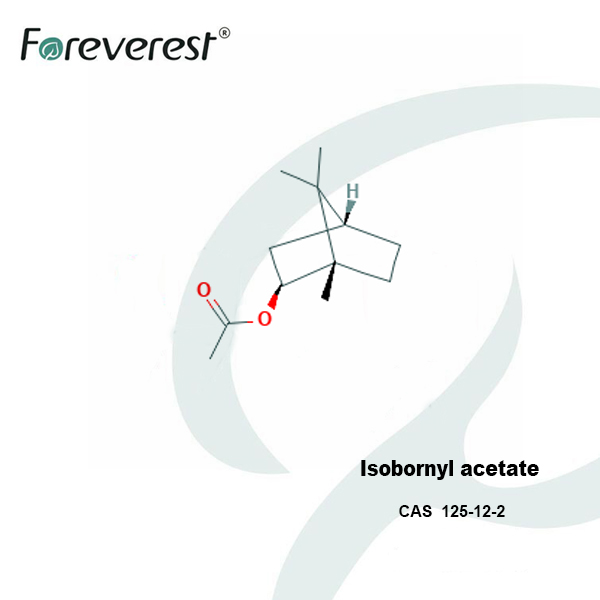Isobornyl Acetate
Isobornyl acetate appears colorless liquid with woody odor. It is usually prepared by the esterification between Acetate and Camphene under the catalysis of Sulfuric acid. It can also be prepared by using ion exchange resin or activated clay as a catalyst.
It is widely used in fragrance formulation, especially in soaps and detergents and other household products.
Substance Identification
| Synonyms | IBA |
| CAS | 125-12-2 |
| EINECS | 204-727-6 |
| FEMA | 2160 |
| HS.CODE | 29153900 |
| Molecular Formula | C12H20O2 |
| Moleclar Weight | 196.288 |
Application & Uses
- Use in fragrance formulation, especially in soaps, detergents, and other household products
- Used as food additive
- Used as a bacis materials of camphor, and synthetic borneolum
Sales Specification
| ITEM | VALUE |
|---|---|
| Appearance | Colorless and transparent liquid |
| Refractive Index, @ n20/D | 1.452~1.466 |
| Relative Density, @ d4/20 | 0.980~0.996 |
| Acid Value, mgKOH/g | 0.5 max |
| Content of Ester, chemical method, % | 97 min |
| LD50 oral, rat | >10g/kg |
| LD50 dermal, rabbit | >20g/kg |
GHS Hazard Statements
| H-Code | H227 |
| P-Code | P210/280 |
| Response | P370+P378 |
| Storage | P403+P235 |
| Disposal | P501 |
Storage
- keep container tightly closed in a dry and well-ventilated place
- store in cool place
Relation Products
Relation Articles
Remark
The above information is believed to be accurate and presents the best explanation currently available to us. We assume no liability resulting from above content. The technical standards are formulated and revised by customers’ requirement and us, if there are any changes, the latest specification will be executed and confirmed in the contract.
Start Purchasing
-
Minimum Order Quantity
Quote required -
Lead Time
Quote required -
Available Incoterms
Quote required -
Regional Availability
Quote required
